
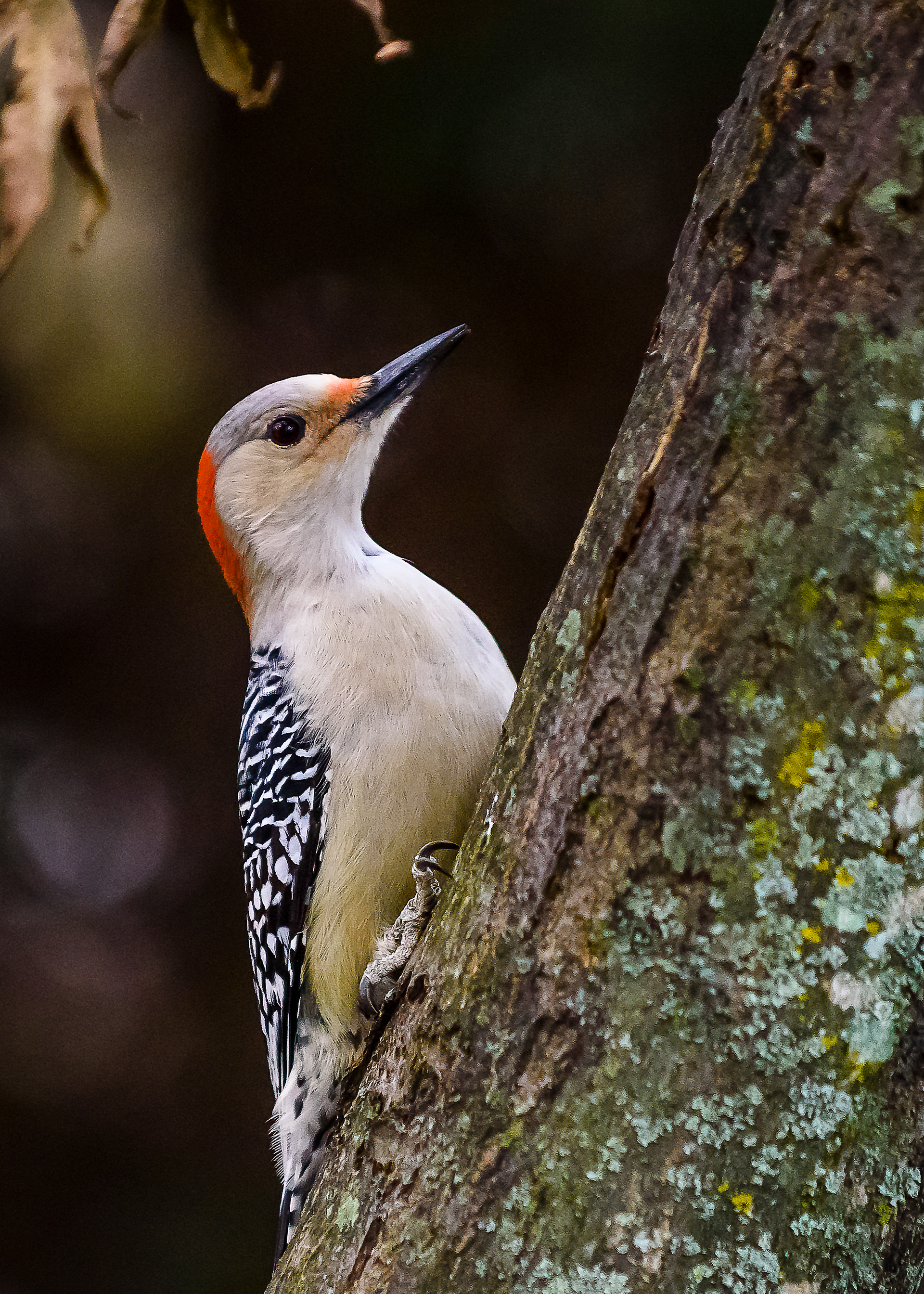
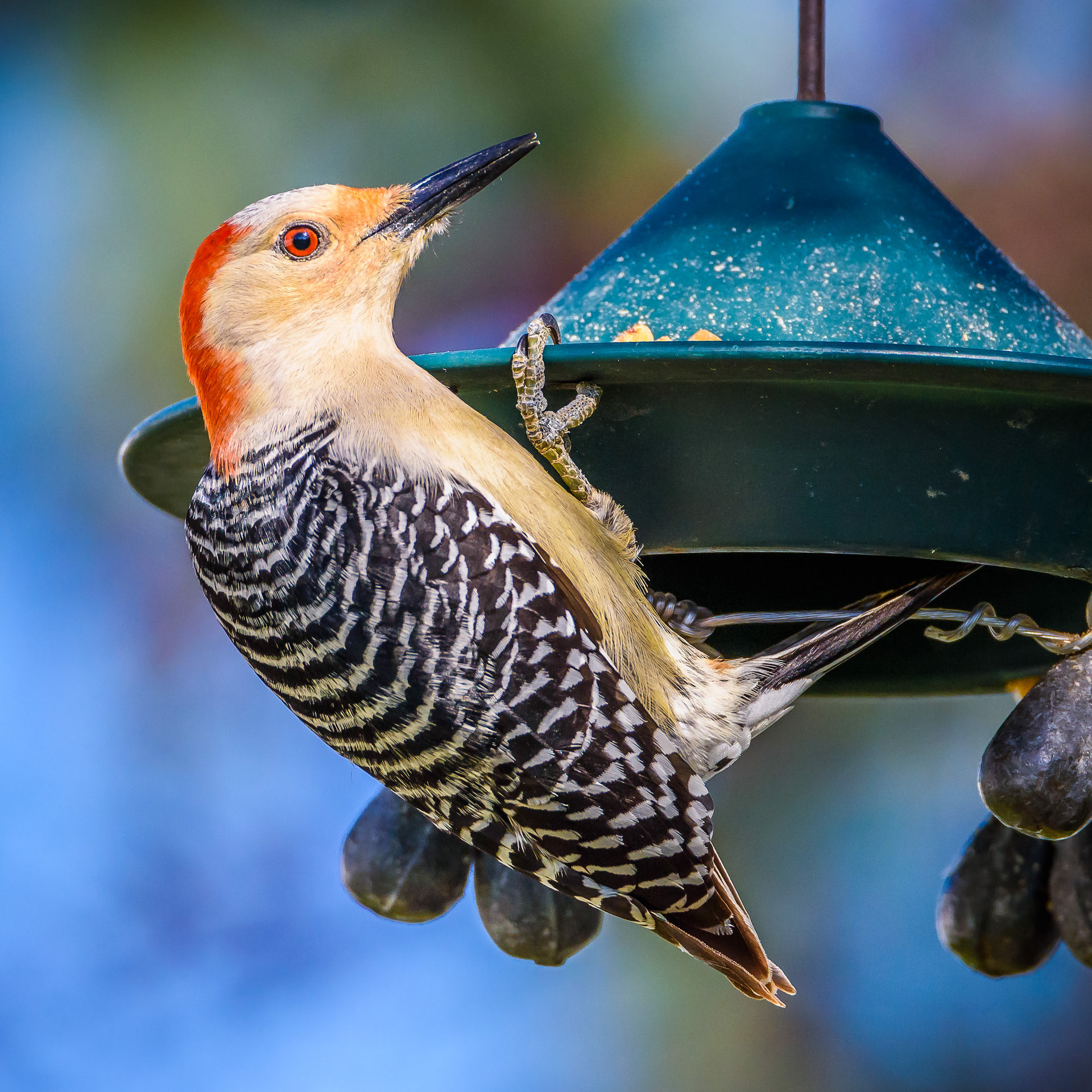
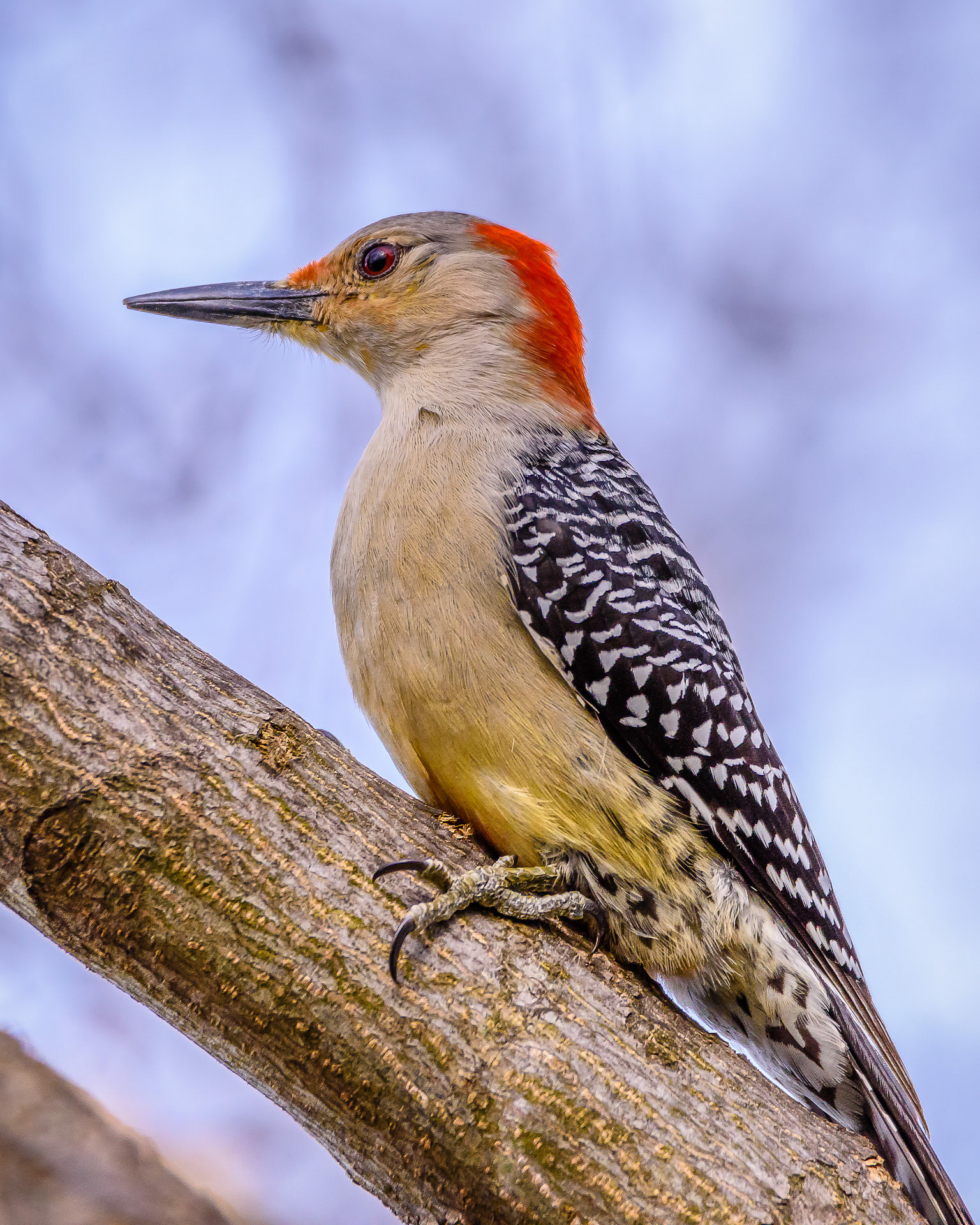
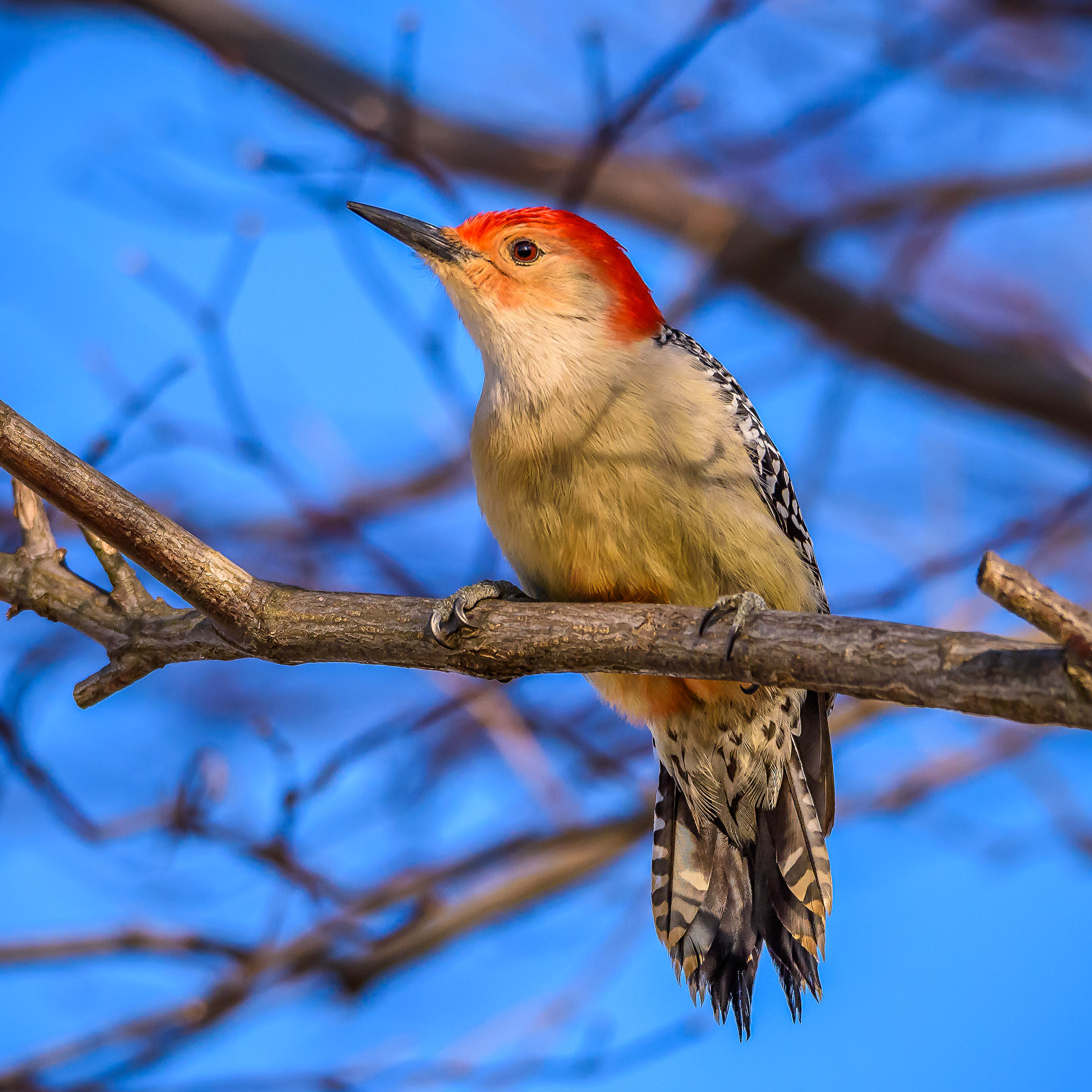
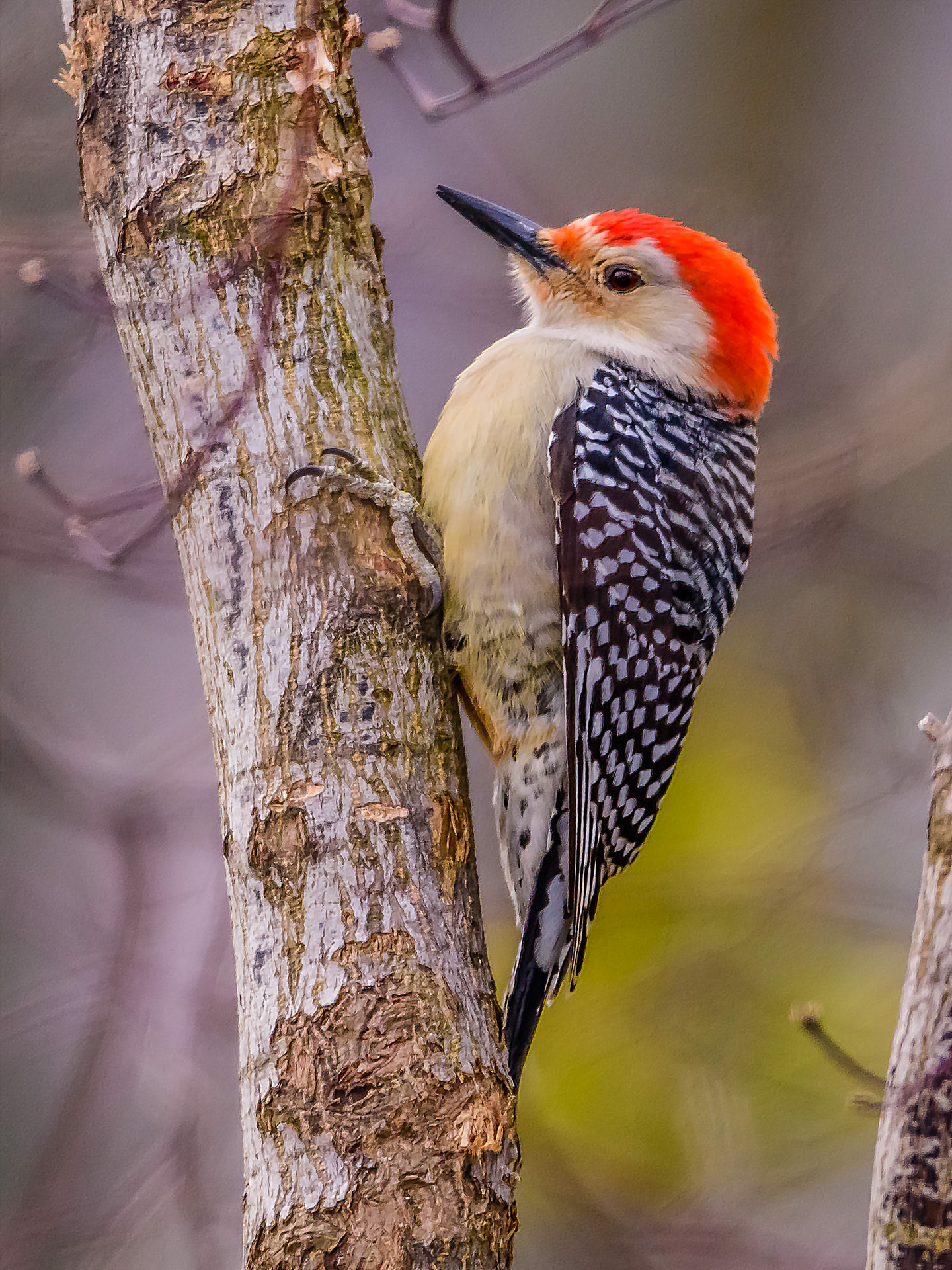

Red-bellied Woodpeckers are pale, medium-sized woodpeckers common in forests of the East. Their strikingly barred backs and gleaming red caps make them an unforgettable sight – just resist the temptation to call them Red-headed Woodpeckers, a somewhat rarer species that's mostly black on the back with big white wing patches. Learn the Red-bellied's rolling call and you’ll notice these birds everywhere. The above description is provided from: www.allaboutbirds.org






